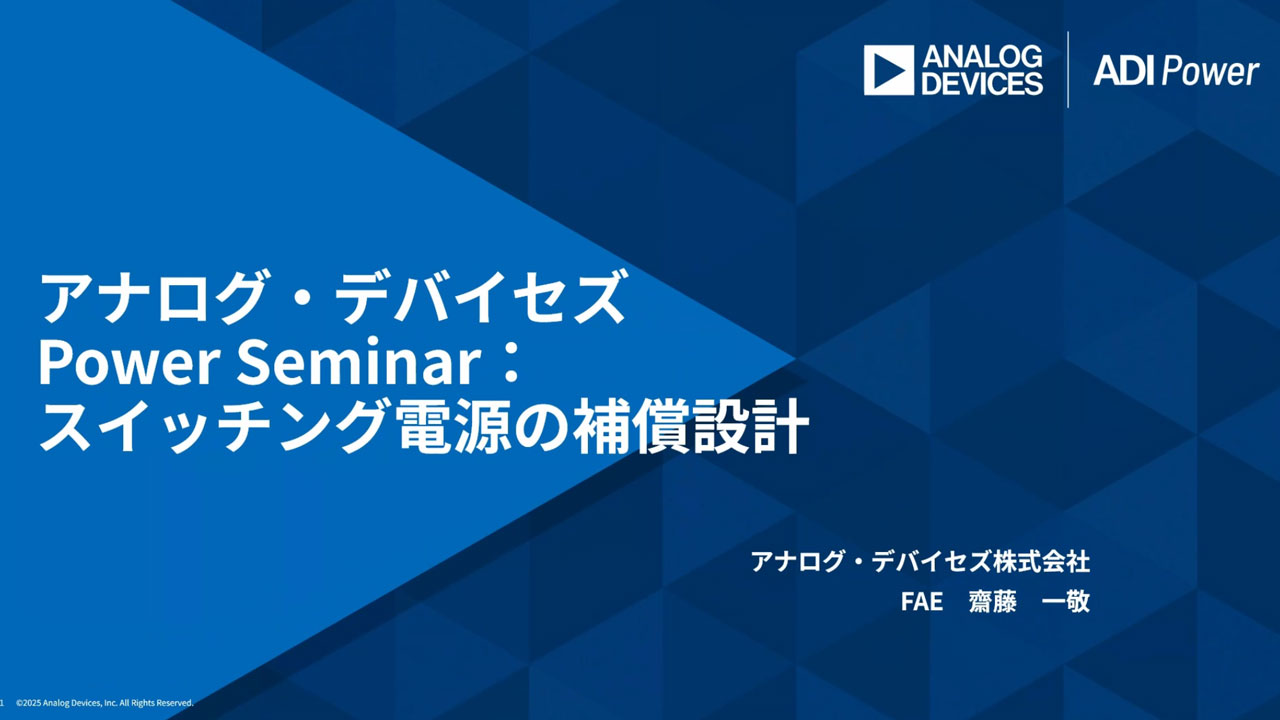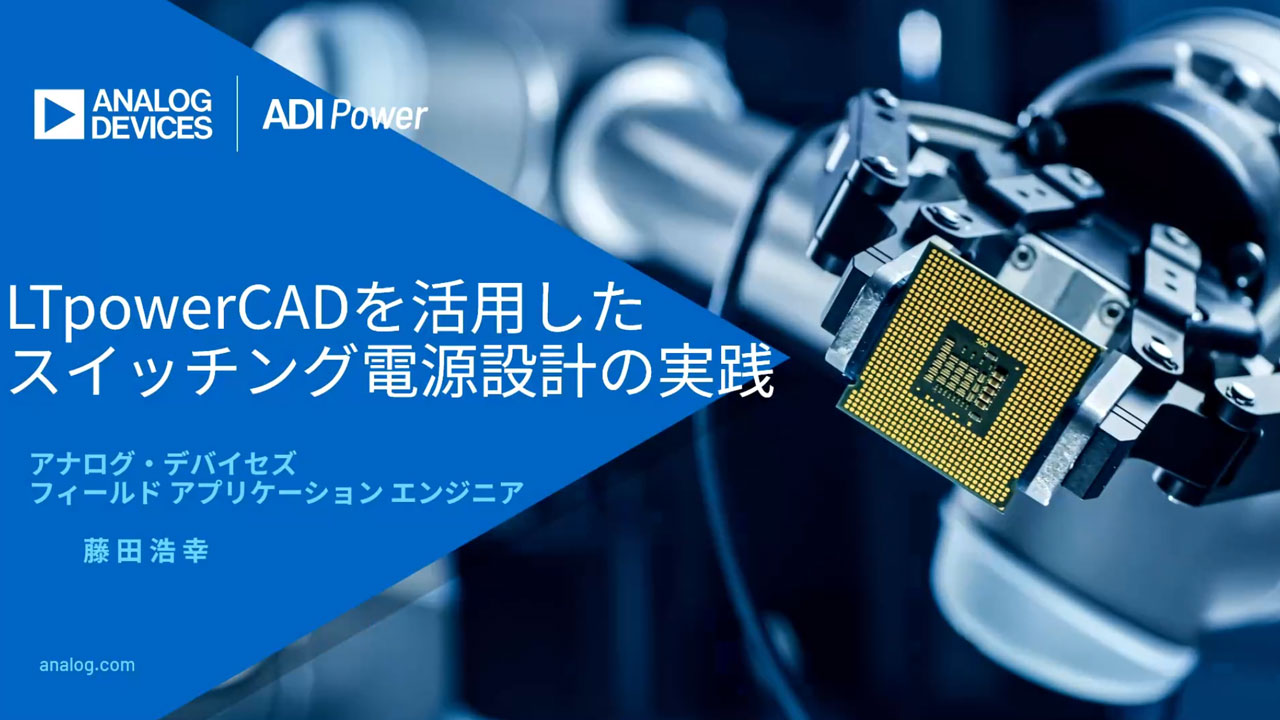物流/小売のオートメーション化に必要な要素【Part 1】
物流/小売のオートメーション化に必要な要素
現在、物流/小売分野の市場は急激に成長しています。それに伴い、サプライ・チェーン全体を対象として生産性とサステナビリティを向上させようという気運が高まっています。例えば、全世界の小包の出荷量は8.5%の年平均成長率(CAGR)で増加し、2027年には2560億個に達すると予想されています。そのような状況を受け、顧客満足度を効率的に高めるための需要が顕著に増大しています1。実際、この分野では即日配送をはじめとするカスタマ・エクスペリエンスの向上が強く求められています。しかし、物流(流通)分野の今日のインフラでは、そうした消費者の要望に追随/対応するのは困難です。
本稿では2部構成(Part 1、Part 2)で、物流/小売のオートメーション化について解説します。その中で特に注目するのはハンドヘルド機器です。その種の機器は、物流/小売の分野でオートメーション化を実現するための必須の要素になります。Part 1では、ハンドヘルド機器のバッテリ管理(バッテリ・マネージメント)について詳しく解説します。この技術は収益に影響を及ぼす重要な役割を担います。第2部の「Enabling Automationin Logistics and Retail - Part 2」では、ハンドヘルド機器に高度な機能を導入することによって、オートメーション・システム全体の効率がどのように改善されるのかを明らかにします。特に、gの大きい衝撃の検出、DSM(Dynamic Speaker Management)、物体の自動寸法測定といった高度な機能に注目することにします。
オートメーション化の現状
一般的な倉庫や配送センターには、スペースの利用、製品の移送、搬送など、様々な面で効率の悪い部分が存在します。そのため、それらの施設は80%~85%程度の効率でしか稼働していないと言われています。また、オートメーション化に関与している倉庫の運用管理者を対象として行われた調査によれば、現在自動化されている倉庫の割合は全体の20%にすぎないと言います2。ただ、この割合は2027年までに90%以上に達すると予想されています。今後5年間を対象として、多大な投資が計画されているからです。
このように、物流の分野では大規模なオートメーション化が進みつつあります。ただ、それを具現化するためには、アセットの追跡機能、マシン・ビジョン機能、物体の寸法測定の機能といったアプリケーションを導入しなければなりません。例えば、サプライ・チェーン全体で商品を効率的に移動させるには、高機能のバーコード・スキャナやハンドヘルド型のコンピュータを導入する必要があります。そうした機器のメーカーにとっては、高度な一連の機能を小さなフォーム・ファクタで提供できるようにすることが課題になります。しかも、バッテリ駆動で動作するように設計することが必須の要件になります。
効率と安全性に配慮したオートメーション
物流分野の企業は、サステナビリティに関する挑戦的な目標を達成することに注力しています。そうした目標を達成するためには、電気自動車によってフリートの最新化を進める必要があります。それだけでなく、物流のサプライ・チェーン全体を対象としてオートメーション化を図るための投資を行っています。
オートメーション化を実現するためには、物流の最初の時点で物体、小包、パレットの寸法測定を実施できるようにしなければなりません(図1)。それらの寸法の情報を得ることにより、下流の計画を早期に策定することが可能になります。このことは、配送用の車両とコンテナの利用率の向上につながります。また、キャビン/コンテナ内におけるアセットの追跡機能を導入することも重要です。それにより、配送プロセスの全体を対象として製品の追跡を実施できるようになるからです。その結果、製品の置き場所を間違えるといった問題が緩和されます。また、安全性とセキュリティを高めることが可能になります。

図1. 3D Time Of Flight(TOF)を利用した寸法測定。コンベア・システムに適用した例です。
ADCスキャナに必要な要素
革新的なオートメーションを実現する上で鍵になる技術は、自動データ・キャプチャ(ADC:Automatic Data Capture)です。ADCを実現するデバイスとしては、単純なバーコード・スキャナや高度なハンドヘルド型のコンピュータなど様々なものがあります。バーコード・スキャナは、ロジスティクスにおける輸送、在庫の追跡、受注処理、製造現場における製品の追跡などに使用されています。そうしたスキャナは比較的単純な作業に使われますが、堅牢性、安全性、セキュリティが高いレベルで確保されている必要があります。また、多様な環境で動作可能なものでなければなりません。図2は、スキャナに関する主要な要件を示したものです。これらの要件を満たすためには、以下のような技術が必要になります。
- 急速充電:バッテリの急速充電を実現できれば、ハンドヘルド機器を駆動するために施設で使用するバッテリやチャージャの数を抑えられます。このことは、設備投資の削減につながります。
- 高精度の充電:バッテリの完全な充電を実現できれば、その使用率を最大化できます。また、本来は不要な充電サイクルによる損失を削減することが可能になります。
- エッジ・ノードの認証:全バッテリのうち5%~7%はクローン品(偽造品)だと推定されています。偽造品を使用すると、充放電の最中に安全上の問題が発生する可能性があります。それだけでなく、運用中のシステムにダウンタイムが生じ、収益の面で大きな損失が発生してしまうかもしれません。そのため、バッテリが真正品であることを認証する技術が必要になります。
- 保護/保証に向けた機能:ハンドヘルド機器を誤って落下させると損傷してしまう可能性があります。大きなg に対応する加速度センサーを機器に組み込むことで、落下によって障害が発生した時期を推定することが可能になります。
- DSM:オートメーション化の対象となる環境は、騒々しく混沌とした状態になりがちです。ユーザ・インターフェースの一部としてオーディオ機能を使用する機器については、高品質のオーディオ・アンプを採用してスピーカの出力性能を高める必要があります。その際には、出力電力を最大化しつつバッテリによる動作時間を最小限に抑えなければなりません。しかも、フォーム・ファクタの小さいスピーカによって高い忠実度を維持する必要があります。
- 物体の寸法を自動測定する機能:物体/製品を検出して寸法を測定できるハンドヘルド機器を導入すれば、ロジスティクスにおける輸送の改善を図れます。また、下流のプロセスの効率を大幅に改善するために不可欠な情報を提供することが可能になります。
図2. ハンドヘルド・スキャナを設計する際の主要な要件
今回(Part 1)の記事では、上に示したうち最初の3項目に注目することにします。残る3つの項目については、Part 2で解説します。
スマートなバッテリ残量ゲージ、高速/高精度/セキュアな充電を可能に
バッテリ駆動のハンドヘルド機器にはいくつかの重要な機能を実装する必要があります。そのうちの1つがバッテリ残量ゲージです。つまり、バッテリの充電状態(SOC:State of Charge)を測定するICが重要になります。ここで、24時間にわたり継続して稼働する倉庫について考えてみましょう。その倉庫では、実際の容量に基づけば8時間にわたって給電が可能なバッテリを使用していたとします。そして、機器で使用しているバッテリ残量ゲージには10%の誤差があったとしましょう。その場合、7.2時間しか使用していないのにバッテリ切れとの判定が下されてしまう可能性があります。高精度の残量ゲージを使用した場合と比較すると、各スキャナについて毎年120回以上、余計にバッテリを充電(または交換)しなければならないということです。高い精度で充電を実施し、各バッテリ・パックを最大限に使用することで、ハンドヘルド機器の動作時間を延ばすことが可能になります。大規模な倉庫に配備される数多くの機器について計算すれば、全体としての節約効果は多大なものになることがわかります。
残量ゲージの実装方法は2つあります。ホスト側に実装する方法とバッテリ側に実装する方法です(図3)。ホスト側に実装するシステムでは、ホスト側のチャージャに単純なバッテリ・パックを接続することになります。ホスト側のチャージャはアプリケーション・プロセッサを搭載しており、ホスト側に実装される残量ゲージICとの間で通信を実施します。このアーキテクチャは、バッテリが完全に埋め込まれた形のシステムに適しています。ただ、数年間しか使用されない予定であれば、取り外しが可能なバッテリを備えたシステムにも適していると言えます。更に、コストが重視されるアプリケーションにとっても有用です。
図3. 残量ゲージに関連するアーキテクチャ。(上)はホスト側、(下)はバッテリ側に残量ゲージを実装する場合の例です。
一方、バッテリ側に実装するシステムではバッテリ・パックに残量ゲージICが実装されます。このアーキテクチャは、取り外しが可能なバッテリを使用する寿命の長いシステムに適しています。また、この方法では、ハンドヘルド機器でバッテリ・パックを最初に使用する際に認証処理を実施できます。つまり、バッテリのセキュア認証が可能になるということです(詳細は後述)。
従来の残量ゲージの実現方法は大きく2種類に分けられます。1つは、クーロン・カウンタを使用する方法です。この方法では、センス抵抗を流れる充放電電流を測定することで残量(電荷量)を推定します。もう1つの方法は、オープン・サーキット電圧(OCV:Open Circuit Voltage)を測定することによって残量を推定するというものです(以下、この種の残量ゲージを電圧残量ゲージと呼びます)。例えば、OCVが4.2Vであれば100%充電されており、OCVが2.8Vであればかなり消耗しているといった具合です。なお、上記2つの方法を組み合わせて実現される残量ゲージも存在します(図4)。ただ、上記のいずれの方法においても、落とし穴と言えるような問題が生じることがあります。まず、クーロン・カウンタを使用する方法では、時間の経過に伴ってオフセットが蓄積されていきます(図5)。そのため、この誤差をリセットする処理が必要になります。但し、その処理はバッテリが完全に弛緩したとき(無負荷の状態)か、電荷を消耗したときにしか実施できません。それに対し、電圧残量ゲージではセルのOCVを利用します。ただ、典型的なセルの放電曲線における平坦な部分の振る舞いを考えると、放電量を正確に推定するのは容易ではありません。また、その推定値は負荷の条件にも大きく依存します(図6)。
図4. クーロン・カウンタと電圧検出の両方法を利用する残量ゲージのアーキテクチャ
図5. 時間の経過に伴うクーロン・カウンタの累積オフセット誤差。OCVの測定後に補正を実施する例も示してあります。
図6. SOCとOCVの関係(左)。負荷が存在する場合、電圧残量ゲージによるOCVの測定結果を基にしたSOCの推定値と実際のSOCの値にはミスマッチが生じます。つまり、セルのOCVを正確に測定するのは容易ではありません。
また、バッテリのSOCには様々な要因からの影響が及びます。そうした要因の例としては、内部の自己放電、セルの経時変化、温度などが挙げられます。しかしながら、クーロン・カウンタをベースとする残量ゲージも電圧残量ゲージも本質的にそれらの要因を考慮したものではありません。
つまり、より精度の高い残量ゲージを実現するためには、より高度な検出方法が必要になります。例えば、アナログ・デバイセズはModelGauge™という技術を適用した残量ゲージの製品ファミリを提供しています。それらの製品を採用すれば、より正確な残量データが得られます(図7)。各製品は、ModelGaugeとModelGauge m5という2つの異なるアルゴリズムを採用しています。それらにより、バッテリのSOCの正確な評価が実現されます。
図7. 様々な条件におけるSOCの誤差。青色はModelGaugeのアルゴリズムを適用した場合、紫色は従来のアルゴリズムを適用した場合の値を表しています。
ModelGaugeアルゴリズムを適用したICは、SOCの推定値(単位は%)を提供します。その値は、負荷が存在する状態(負荷を切り離さない)でOCVを推定することによって取得したものです。OCVの推定値は、バッテリの電圧を入力とし、動的なパラメータを用いたリアルタイム・シミュレーションによって算出します。この手法では、温度が0℃以上の場合に高い精度が得られます。
一方、ModelGauge m5アルゴリズムはModelGaugeアルゴリズムよりもはるかに高度なものです。これを使用すれば、SOCだけではなく多様なデータを取得できます。例えば、バッテリの絶対容量(単位はmA時)、エンプティになるまでの時間、フルになるまでの時間、セルの経年変化、経年予測といった様々な情報が得られます。このアルゴリズムでは、電圧、電流、温度の測定値を使用します。つまり、温度が低い、負荷が高いといった複雑な動作条件における様々な値を高い精度で得ることが可能です。なお、このアルゴリズムは、ホスト側とバッテリ側のどちらに残量ゲージを実装する場合にも対応できます。
アナログ・デバイセズは、保護用回路と認証機能を内蔵する残量ゲージICを数多く提供しています。ホスト側に実装する製品の例としては「MAX1726xシリーズ」が挙げられます。一方、バッテリ側に実装する製品としては「MAX17201/MAX17211」や自己放電の検出機能を備える「MAX17300/MAX17310」などがあります。より容量の大きい2S+のバッテリには、ModelGaugeアルゴリズムに対応する「MAX17049」やModelGauge m5アルゴリズムに対応する「MAX17261/MAX17263」が適しています。あるいは、チャージャも統合した「MAX17330/MAX17332」(リニア方式)や「MAX77840/MAX77818」(降圧方式)を利用することも可能です。これらを使用すれば、1チップでバッテリ管理システムを実現できます。
アナログ・デバイセズは、USB充電を利用する機器向けの技術としてAccuCharge®を開発しました。この技術は、標準的なUSB Battery Charge Rev.1.2(USB BC1.2)と、より高度な最新の充電技術であるUSB Power Delivery(USB PD)に対応します。AccuCharge技術を適用した製品を採用することにより、バッテリの充電に用いる完全なシグナル・チェーンを実現できます。例えば、「MAX77757/MAX77787」は、JEITA(Japan Electronics and Information Technology Industries Association)の充電プロファイルに準拠したUSB Type-C/同BC1.2対応デバイスを自動的に検出する機能を備えています(図8)。また、抵抗やデジタル入力ピンを使用することで、あらゆる構成を実現することが可能です。これについては、バッテリが消耗している場合でも適切に起動するように、抵抗による構成が優先されるようになっています。それ以外にも、USB対応デバイスの検出に必要なあらゆる機能を内蔵しています。そのため、これらのICを中心として設計されたアーキテクチャでは、ファームウェアを開発/使用する必要はありません。
図8. MAX77757/MAX77787の概念図。これらのICを採用することで、標準的なUSB Type-C(15W以下)による充電に対応可能な1チップのアーキテクチャを構成できます。しかも、ファームウェアを使用する必要はありません。
上に示したような統合レベルが高いICを使用すれば、よりコンパクトかつ効率的な設計を実現できます。例えば、上記のICは温度管理の面で優れた性能を発揮します。そのため、システムを34%も小型化しつつ、高速かつ効率的な充電機能を提供できます。実際、非常にコンパクトなウェアラブル機器の設計にも対応可能です(図9、図10)。
図9. MAX77757によって得られる効果。集積度が高く、温度管理の性能に優れる同ICを採用することで、34%の小型化を実現できます。そのため、非常にコンパクトなウェアラブル機器の設計にも対応可能です。
図10. MAX77757を使用して構成した回路(図9)の効率。競合製品と比べて約3.5%高い充電効率が得られます。
アナログ・デバイセズの製品を使用すれば、15W以上の充電が行えるUSB Type-C/USB PD(以下、USB-C PD)対応システムを構成できます。その場合、USB PD対応のコントローラ「MAX77958」とバッテリ・チャージャICを組み合わせます。1セルのバッテリを使用する場合、バッテリ・チャージャICとしてはAccuCharge技術を採用した「MAX77985/MAX77986」を使用できます。2セル以上のバッテリに対応したい場合には、バッテリ・チャージャICとして「MAX77960/MAX77961」を使用するとよいでしょう。MAX77958を使用すれば、USB-C PD3.0に完全に準拠したチャージャの制御を実現できます。同ICは、ケーブルの方向と電源の役割の自動検出機能、チャージャの制御に用いるI2Cのマスタ・インターフェースを備えています(図11)。
図11. USB PD(15W以上)に対応する2チップのアーキテクチャ
MAX77985/MAX77986を使用すれば、USB-C PDを利用するバッテリ駆動の機器の効率を高められます。ハンドヘルド型のコンピュータやモバイル・スキャナについては、毎日多数のバッテリ・パックの充電/交換が行われることになります。したがって、バッテリ・パックの高速充電を実現できればダウンタイムを短縮できることになります。効率の高いチャージャICと集積度の高いコントローラICを採用すれば、USB-C PDを介した充電を高い性能で実施できます。その結果、バッテリ・パックの充電が高速化され、温度の上昇を抑制し、バッテリに対するストレスを最小限に抑え、バッテリの動作寿命を最大化することが可能になります(図12)。
図12. MAX77986によって得られる効果。高性能のチャージャを採用することで、より低い温度で高速にバッテリを充電することができます。また、バッテリに対するストレスが軽減されるので、バッテリの動作寿命を最大化することが可能になります。
これらのアーキテクチャを採用すれば、1セルのバッテリを使用するアプリケーションの効率を高められます。それだけでなく、より高い電圧を得るためにマルチセルのバッテリを使用するアプリケーションの効率を高めることも可能です(図13)。
図13. 1S/2S+のバッテリ用のアーキテクチャ。USB-Cを介した充電に対応します。
偽造品に対処するための認証機能
バッテリ駆動の機器を設計する際、特別な配慮が必要な事柄があります。それは偽造品への対処です。バッテリはあらゆる産業で使われます。また、大量に使用される高価なコンポーネントでもあります。そのため、バッテリは偽造者にとって実入りのよいターゲットになります。通常、バッテリの偽造品は高い基準に即して製造されるわけではありません。そのため、真正品と比べて内部短絡のリスクがはるかに高いといった危険をはらんでいます。短絡は熱暴走につながります。連鎖効果が引き起こされると、発煙や発火を招く可能性もあります(図14、図15)。
図14. バッテリの偽造品で生じる内部短絡。熱暴走、発煙、発火につながる可能性があります。
図15. 過充電によるバッテリの劣化。段階的に症状が現れ、最終的には熱暴走につながる可能性があります。
図16. ホスト側の認証機能によるバッテリの認証プロセス。危険な偽造バッテリの使用を防ぐための処理が行われます。
スマートなバッテリ残量ゲージICを採用すれば、上記の問題を緩和できます。内部短絡に関する警告をシステムに対して発する機能とバッテリを切り離す機能が提供されるからです。それにより、潜在的な問題を回避できることになります。また、システムのバッテリ側に認証機能を備えるスマートな残量ゲージICを実装することも検討するとよいでしょう。そうすれば、バッテリの認証を実施できるようになります。その場合、バッテリと機器は秘密鍵を共有します。そして、バッテリを機器に装着する際、その真正性が立証されます。バッテリが真正品ではないと判断された場合、機器はその動作を防止し、偽造バッテリを使用することで生じる可能性がある安全上の問題を回避します(図16)。
まとめ
アナログ・デバイセズは、高精度かつ多様な機能を備えるバッテリ残量ゲージICを提供しています。それらのICの多くは、バッテリの保護用回路を備えています。また、バッテリの偽造品が使われることを防止するためのセキュア認証機能を備えている製品も用意されています。その種の製品では、サイズが160ビットの秘密鍵を使用し、SHA-256に対応した認証を実行します。そうした残量ゲージICは、出荷される前の段階で、秘密鍵を用いて工場でプログラムすることが可能です。そのプログラムが完了してから、バッテリ・パックの最終的な組み立てを担うバッテリ・メーカーに出荷されることになります。
オートメーション化によって全般的な効率を向上させるためには、より高度なハンドヘルド機器が必須です。次回(Enabling Automation in Logistics and Retail - Part 2)は、それらのハンドヘルド機器に導入できる先進的な機能について解説します。
参考資料
1 James Melton「Global parcel volume to grow at 8.5% CAGR through 2027(世界の小包の量は2027年までに8.5%のCAGRで増加)」Digital Commerce 360、2022年9月
2 「Making Modern Warehousing a Reality(最新の倉庫管理を実現する)」Zebra



































